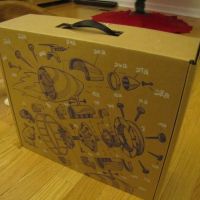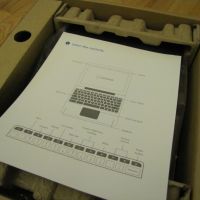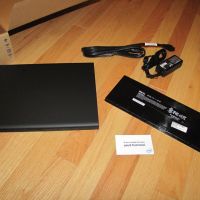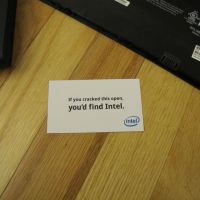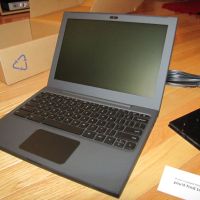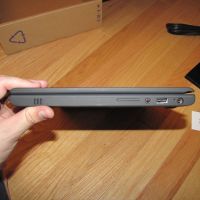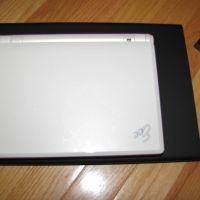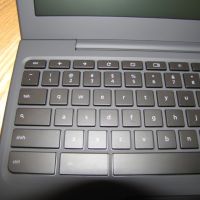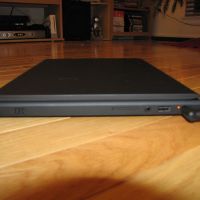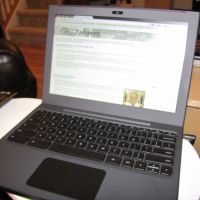Google is one of the darlings of the technology industry and, since its now-ubiquitous search engine slaughtered its competition in the late 1990’s and early 2000’s, it has slowly but confidently branched out in to more and more Internet industries. Between Google Maps, Google Docs, Gmail, YouTube, Google News, Google Reader, and countless other properties, it’s a pretty sure bet that you spend a fair amount of your day on one or more of Google’s sites. Many—myself included—have begun using Google’s excellent Chrome web browser as their primary means of surfing the web, stealing market share from Microsoft Internet Explorer and Mozilla Firefox.
With it’s Linux-based phone operating system called Android, Google has now become a player in the OS universe. Android has seen broad success on a variety of manufacturers’ phones, including well-known devices from HTC and Motorola, and is widely considered to be the most plausible contender to unseat Apple’s iPhone juggernaut. But Android isn’t Google’s only operating system project. There is another.
First announced on July 7, 2009, Google has also been working on an operating system called Chrome OS. As its name implies, the actual ‘operating system’ here is practically non-existent—it is just a thin Linux-based layer between the computer’s hardware and the Chrome web browser. Basically, when you start up a Chrome OS machine, all you get is a browser window and the Internet. Anything and everything you do on a Chrome OS machine (with some very limited exceptions) is on the web.
On December 7, 2010—this past Tuesday—Google announced that it would distribute a limited number of ‘Cr-48’ notebook computers running a pre-release version of Chrome OS. Google’s intent is to get the operating system and a sort of ‘reference design’ notebook into real users’ hands for testing and feedback in order to polish-up the real products before they go on sale. Interested users were welcome to enter online for the chance to receive a free Cr-48 and, in return, all they had to do was agree to share their feedback with Google. I signed up on Wednesday morning, expecting to never hear from them again.
Much to my surprise, without any email notification or anything, I received an anonymous laptop-sized box via UPS on Friday. I opened it up, and inside was a svelte, matte-black notebook computer with labels (in the battery-compartment) calling it ‘Mario.’ I was one of the lucky few; I got a Cr-48 notebook and the chance to try out Chrome OS before almost anybody else. Rumor has it that Google sent out (or will send out) a total of 60,000 Cr-48’s to an unknown percentage of an unknown number of applicants.
Cr-48 Unboxing and Hardware
The packaging reminded me very much of the Amazon Kindle packaging—clean, attractive, minimalist, and brown (unlike Apple’s preferred clean, attractive, minimalist, and white or black). On opening it, the laptop was right there ready to pull out with nothing covering it but an attractive, one-page information sheet. There was a small business-card informing me that, if I opened the notebook up, I would find an Intel processor inside. Underneath the laptop itself was its battery and power cable. That’s pretty much all there was.
The laptop itself is similarly beautiful and minimalistic. It looks very much like the bygone black MacBook, complete with a large centered hinge and pleasant, solid, separated keyboard keys that are a real pleasure to type on (for a laptop). If you have typed on any recent Mac, you’ll feel right at home on this keyboard. My MacBook Pro has the older style keyboard, so I asked my wife Melissa—who types on a 13″ MacBook Pro keyboard almost every day—to type on the Cr-48 and compare. She says they are very similar, and that the Cr-48’s might even be a little bit more responsive. Yes, Melissa says that the free notebook’s keyboard is better than the $1,300 notebook’s. Go figure.
I’m not sure I’d go quite that far, but it is a good keyboard. The main letter and punctuation keys are exactly where you’d expect, and my fingers fall naturally exactly where they ought to. I had to adjust a bit to the up and down arrow keys sharing the space of one normal key, and to the over-sized ctrl and alt keys, but none of these posed a real problem. Because it’s built for browsing, the caps-lock key has been replaced with a search key (though its function can be changed back to caps-lock in the settings). Also, the function key row has been replaced with the back, forward, and refresh browser controls, a ‘full screen’ button, window switcher, brightness controls, volume controls, and the power button.
It also has a generously-sized trackpad; it’s smaller than those on recent Macs, but bigger than those on many Windows notebooks. It was initially a bit touchy and weird but after the machine updated its OS (more on that later) and I tweaked the settings a bit it got much better. My only complaint is that it does seem to get occasional spurious mouse movements and touch-clicks while I’m typing. This is likely a software problem, not a hardware problem; the same thing happens on my Mac, but only when I boot it into Windows 7 Home Premium. Improved mouse drivers in Chrome OS would probably remedy this issue. In the mean time, I’ve turned off ‘tap to click’ so I have to actually press the button (or, rather, press the bottom segment of the trackpad; this has become the bizarre norm on many Windows notebooks as well). The trackpad is not multi-touch and doesn’t seem capable of handling complex gestures, but it does detect two-finger scrolling and two-finger taps (for ‘right click’).
The display is a roughly-12″ widescreen display with a camera and microphone comfortably nestled in the usual place in the top bezel. The screen has a pretty wide viewing angle and everything looks as crisp and clear as I would expect from a low-end notebook. I haven’t spent much time with the camera, but it seems like it’ll do a fine job for basic video chat. The on-board speakers are nothing to write home about, but you can’t expect much from a notebook in this regard anyway (especially at the low end). They do the job, although a bit more volume would be nice. The whole machine feels very light; much lighter than my MacBook Pro and only very slightly heavier than the EeePC.
For connectivity, the Cr-48 comes with your typical WiFi wireless networking capability. It also comes with Verizon 3G capability; 100mb of transfer for free and then various pay plans. I haven’t looked into the 3G very closely yet, except to verify that it does work. I’m fine with WiFi 99 percent of the time, at least for now.
Google calls this a notebook, which is what it looks like with its roughly 12″ frame and full-size keyboard and trackpad, but in every dimension but size it’s really more of a netbook (and with Chrome OS, the term netbook seems even more fitting than on other netbooks). It comes with very few ports—a VGA display connection, one USB port, power, headphone, and SD-card stot. Like other netbooks, it runs one of Intel’s low-powered Atom processors and comes with limited on-board storage space (more on that later too).
Performance-wise, it seems comparable to my EeePC 900A; it is slower for some tasks and faster for others. This may be because of the OS, and future Chrome OS updates will probably improve certain aspects of the performance. My EeePC, despite being much smaller than the Cr-48, has three USB ports to the Cr-48’s one, a wired ethernet port, and a microphone port. A second USB port would be a nice upgrade, as would some kind of digital display connector (HDMI or DisplayPort) instead of the antiquated VGA connection. I also think that the world isn’t quite ready to get rid of the ethernet port yet. The notebook runs pretty cool compared to others; it’s not uncomfortable in the lap even after running for hours-on-end.
Build quality is top-notch, especially for what is presumably a low-end machine (I’m not really sure what the natural sale price would be, since they’re giving it away). The only imperfection I’m seeing on mine is that the battery does not fit as tightly in the frame as I would like; the border between the notebook’s underside and the battery isn’t completely flush. This has no real-world impact on using the machine, but after many years as a Mac user I’m used to tight-fitting, flush batteries. Having said that, I’d prefer a non-flush battery to Apple’s new M.O. of having no easily-replaceable battery at all.
Speaking of the battery, Cr-48’s battery life seems to be very, very impressive. I charged it overnight and then unplugged it first thing this morning. So far, I’ve used it for about six or seven hours and it is still reporting 20 percent battery remaining and another hour or two to go (on WiFi, but with Verizon 3G disabled). While one charge/discharge cycle is absolutely not conclusive—and heck, I haven’t even finished that yet—the first impression is that this thing goes forever on a charge. It seems to be more like an iPad that goes for ten hours straight than, say, my EeePC that only goes for three or four hours (or my MacBook Pro, for that matter).
Chrome OS
The hardware is solid and works great, but what’s really different about the Cr-48 is its operating system. As I mentioned earlier, Chrome OS is really just a web browser. Powering up the notebook for the first time you are greeted by the familiar Chrome browser logo as it boots (for only 10 seconds or so), then you have to log onto a WiFi network and log into the machine with your Google account. That’s right—you don’t create a user account on the machine itself, you use your Google and/or Gmail credentials. From then on, it’ll boot to a log-in screen where you just enter your password. It remembers your WiFi connections (though I haven’t tried starting it up around unfamiliar networks yet).
Trying to log in the first time is where I hit my first snag. I use MAC address filtering on my WiFi network, so the first step to getting a new computer online at my house is to enter the new computer’s MAC address—a unique hardware address assigned to each individual wireless network card—into my network’s filter. Using MAC address filtering is a good (though not foolproof) security measure in addition to strong encryption to help make sure that only authorized people and equipment get on your network. Unfortunately, Chrome OS does not provide any apparent way to get your MAC address before you log in. Normally in this kind of situation I would just plug-in to an ethernet cable to get to a place where I can get my MAC address, but the Cr-48 has no ethernet port. I was forced to temporarily turn off MAC address filtering on my network to get logged in; once I was online I was able to get my MAC address from my DHCP server, enter it into the filter, and turn it back on. Normal users probably don’t use MAC address filtering, so this won’t be an issue for most people.
Once I was successfully online and logged in, the machine took me straight to the normal Chrome browser start screen. It’s really not worth putting up a bunch of screen shots of Chrome OS; if you’ve used the Chrome web browser you know what it looks like (and if you haven’t yet, you can just download it and see). Open Chrome on your Windows PC and maximize it, auto-hide the Windows taskbar, and imagine that instead of the window controls at the top right you instead have a little clock, WiFi status icon, and battery status icon. That’s pretty much Chrome OS. In fact, the Chrome browser version number indicates that the browser is from the same beta channel available for other platforms.
Like Chrome on other platforms, Chrome OS silently upgrades itself without any user intervention. I noticed after playing with it for a few minutes that I had gotten the little ‘updated’ icon I’m familiar with from the Chrome browser, and after restarting the machine the update was installed. I’m not sure if it upgraded the underlying OS, the browser, or both (they do both have independent version numbers) . . . I don’t think I’m supposed to care either way.
While I do my heavy computing primarily on a 15″ Apple MacBook Pro, I’ve kept a netbook on my coffee table over the last several years for surfing the web while I’m watching TV and doing other low-powered tasks. While my netbook, an Asus EeePC 900A, runs Ubuntu Linux, I usually just run Chrome maximized on it anyway. My main ‘always open’ applications used to be a browser, RSS aggregator, email application, and maybe some other stuff. One-by-one this has been shrinking, and now basically all I run on the netbook is Chrome. Instead of a bunch of standalone programs, I have Gmail, Facebook, Google Reader (an RSS aggregator), and Google News all ‘pinned’ at the left of the browser’s tab bar. As such, it isn’t much of a shift for me to go to a ‘browser only’ OS for my netbook. For others this might be more jarring.
My self-imposed task, aside from just playing around with it, was to shift completely from the EeePC to the Cr-48 as my netbook and do basically all my work for this review right in Chrome OS.
The basics were pretty easy. Chrome OS, just like any other Chrome browser, can connect with Google’s Chrome sync service to sync extensions, bookmarks, settings, and more. Because I was already using Chrome as my daily-browser on other platforms, this gave me a huge head-start. Clicking around on the web works exactly as you’d expect, and all the keyboard shortcuts I’m accustomed to work just fine. Creating a new window with ctrl-n or from the application menu is really more like creating a virtual desktop; you can switch between your windows/desktops with the window switcher button (where F5 would normally be) or with alt-tab and alt-shift-tab. You can switch between tabs in your current window with ctrl-tab and ctrl-shift-tab just like in Chrome on other platforms. It’s really a fairly robust and flexible way of organizing many tasks, albeit with the limitation that you can only have one window (and one tab within that window) visible at any time.
All my Chrome extensions seem to work just the same in Chrome OS as they do in Chrome elsewhere, and the overall performance of the browser seems to match or exceed Chrome’s performance on the EeePC. The one noticeable exception is Flash. Much maligned by many, I really have no major problem with Flash . . . but its performance under Chrome OS on the Cr-48 is pretty poor. YouTube videos play fine at normal size, but start to get jittery and ‘off’ when expanded to full screen. I also tested some Conan O’Brien clips on TBS’s web site, which work fine even in the Flash player for Linux, and found them annoyingly jittery even at their small size. I’m guessing this is a software problem, not a hardware one, and am hoping it will be remedied with software updates. I haven’t yet spent any time testing HTML5 video, which might perform better.
There is internal storage, although it’s unclear exactly how much. When you download files, they are saved to a ‘file shelf’ which is presumably on a small SSD or flash drive built into the machine, and from there you can open them (depending on what they are) or upload them to other sites or whatever you need to do with them. This system needs a little work; the file shelf should be easier to find and manage.
I hit my second major snag when I wanted to prepare my photos of the Cr-48 for upload. I took the photos on my Canon PowerShot camera and stuck the SD-media card into the Cr-48’s reader. Using the built-in content browser (accessible via ctrl-o for ‘open’), I was able to open the images and look at them easily . . . but I realized I had no way to adjust the levels, crop them, and resize them. On my Mac, I’d import the photos into iPhoto and take care of it in a matter of minutes. On the EeePC, I could bring ’em into Gimp or Shotwell (or any number of other options) and do the same. What do you do if you have a web browser . . . and nothing but a web browser?
Of course I could upload them all to Picasa or Flickr or Photoshop.com or something, assuming those services are capable of doing what I need, and then download them again and re-upload them to my web site. That’s a lot of pointless back-and-forth for something I’m used to doing in a matter of minutes. So I cheated: I did all my photo processing in iPhoto on my Mac. Some things just don’t make sense in a browser, at least not yet.
I suspect that fulfillment of Google’s dream to have us do everything online is still many years off, if it ever comes at all. Content creation—photos, videos, design, and development—still need much more than web-based applications can provide. My EeePC was never good for these things either; the most I’d do on it was some very light photo editing. That’s really the only thing I’ve lost by moving to Chrome OS and the Cr-48, and it’s no big loss since it adds very, very little inconvenience to have to do those things on the Mac that I’m on pretty regularly anyway. But the Cr-48 and machines like it are unlikely to actually replace a full-fledged computer (Mac or PC) any time soon. As a secondary machine however, it could be a compelling alternative to the standard netbooks, and even to tablets like the iPad for people who do a lot of typing and still prefer the traditional laptop form-factor.
There does seem to be a way of running ‘apps,’ which are presumably more capable than Chrome extensions, but there are very few examples available right now. Two I’ve tried are the Google Talk app and the Scratch app, which lets you take notes that sync with Google Docs. These, along with notifications from Chrome extensions, pop-up along the bottom of the screen when they are running and are accessible from inside any tab or window. They are handy, but it would be nice to see a better way of managing them, and it would be nice to be able to run real apps (like photo editing software) right in Chrome OS somehow. This really seems to be a ‘half-baked’ concept right now. For example, while Chrome OS remembers your open tabs and windows between sessions (just like the Chrome browser), apps have to be manually restarted in each session. Annoying.
There are still a few rough edges here-and-there in Chrome OS, though not as many as you might expect. I already mentioned the issue with the MAC address when I first started up, and that it doesn’t remember open apps between sessions. I’ve reported both of these to Google already, as well as a bug that prevents users from configuring Chrome’s address bar search shortcuts. I use those all the time, so I’m really missing the ability to configure them to my liking. I’d like a more logical way of accessing and manipulating the filesystem, or at least a ‘user accessible’ part of it. As I mentioned, I’d like to see Chrome applications actually become Chrome applications—photo management, video editing, etc.—which might even make this a viable full-time (or near full-time) operating system in the long run. Google also needs to make all of their main applications work properly offline; if I lose Internet access for a period of time, my Chrome OS notebook should still be at-least partially usable.
There are some other things missing too. I would like to see a music player that can play music from DAAP streams, the ability to print directly to shared network printers (without going through Google CloudPrint), and the ability to browse network file shares. These missing features haven’t bothered me much so far, but they will. The fact that I can’t use my own existing local network services for these kinds of things probably would have been the ‘deal breaker’ stopping me from buying a Chrome OS machine if they weren’t giving them away.
The Verdict (So Far)
Despite the handful of bugs and shortcomings, I’ve spent a solid day with my Cr-48 and Chrome OS and haven’t felt like I’ve given up very much—at least as compared to the EeePC it’s likely to replace. I also don’t feel like I’m using an overpriced toy, which is the unfortunate vibe I get when I play around with Melissa’s iPad. I couldn’t imagine writing a 3,300-plus word technology review on an iPad, and even doing it on the EeePC with its cramped keyboard would have been a stretch. I did it here on the Cr-48 with no problems at all, except for the lack of photo editing/management software.
So the verdict is that Chrome OS, which I personally declared to be a non-starter when it was first announced, turns out to be a fine operating system for a secondary machine. It has a lot of potential. I’m very interested to see how it develops, especially if the ‘apps’ become real applications and if more and more web sites make use of HTML5 local storage to allow their use offline. For now, a Chrome OS notebook is a very attractive paperweight without Internet access. Of course, that’s why it comes with Verizon 3G capability . . . if you’re willing to pay for it. The biggest ‘misses’ for me right now: can’t print (without CloudPrint), no real apps, and that ‘beta’ feel around the edges.
In defense of Chrome OS, these ‘misses’ aren’t that different from Mac OS X’s ‘misses’ when I first switched to Mac in 2001. My Power Mac G4 ‘Quicksilver’ was a great machine with a ground-breaking operating system, Mac OS X 10.0, that lagged when it resized windows, couldn’t play DVDs, and didn’t have hardly any native software available except the stuff made by Apple itself. Back then, I had to run apps in ‘Classic’ mode until people got around to making native apps. On Chrome OS, I’ll have to find alternatives to similar ‘can’t do that on this platform yet’ issues. Such is the peril of being an early adopter. This is not a reason to condemn the platform; on the contrary, I’ve been pleasantly surprised the potential I see here and haven’t felt any compelling need to move back to the EeePC (though, again, I’m not giving up the MacBook Pro any time soon either).
The Cr-48 itself has proven itself a surprisingly solid little machine—far better than the finicky testbed I expected. It’s no power machine, but I wouldn’t expect it to be. It holds its own against other netbook-type hardware, and has a downright great keyboard for a machine it its class. It’s unassuming and utilitarian in the best possible way.
So the question is: Would I have bought one if Google wasn’t willing to send me one for free? With its current limitations, probably not. With another year of development and improvement though, and for a reasonable price (say, $300 or less), and with the ability to use my local network infrastructure . . . yeah I would probably seriously consider getting one of these as my secondary machine. As I mentioned before, the real ‘deal breaker’ on a purchase (for me) is that I can’t utilize hardly any of my local network infrastructure. I have invested in a home server that streams music, shares files, and shares printers . . . and I can’t use any of those things from Chrome OS. Bummer.
But again, the system does work and it does have potential. I haven’t put it in developer mode (yet ;-)), but there’s a Linux kernel underneath Chrome OS and there’s no reason that these features and capabilities can’t come to the platform in the coming months and years. It will be interesting to watch it as it develops, presumably in the curiously rapid and frenetic way that most Google products do, and it will be a lot of fun to be here on the cutting edge experiencing it as it happens (and contributing my meager feedback to Google along the way).
If you have any questions or anything you want me to try out for you, please leave a comment!


